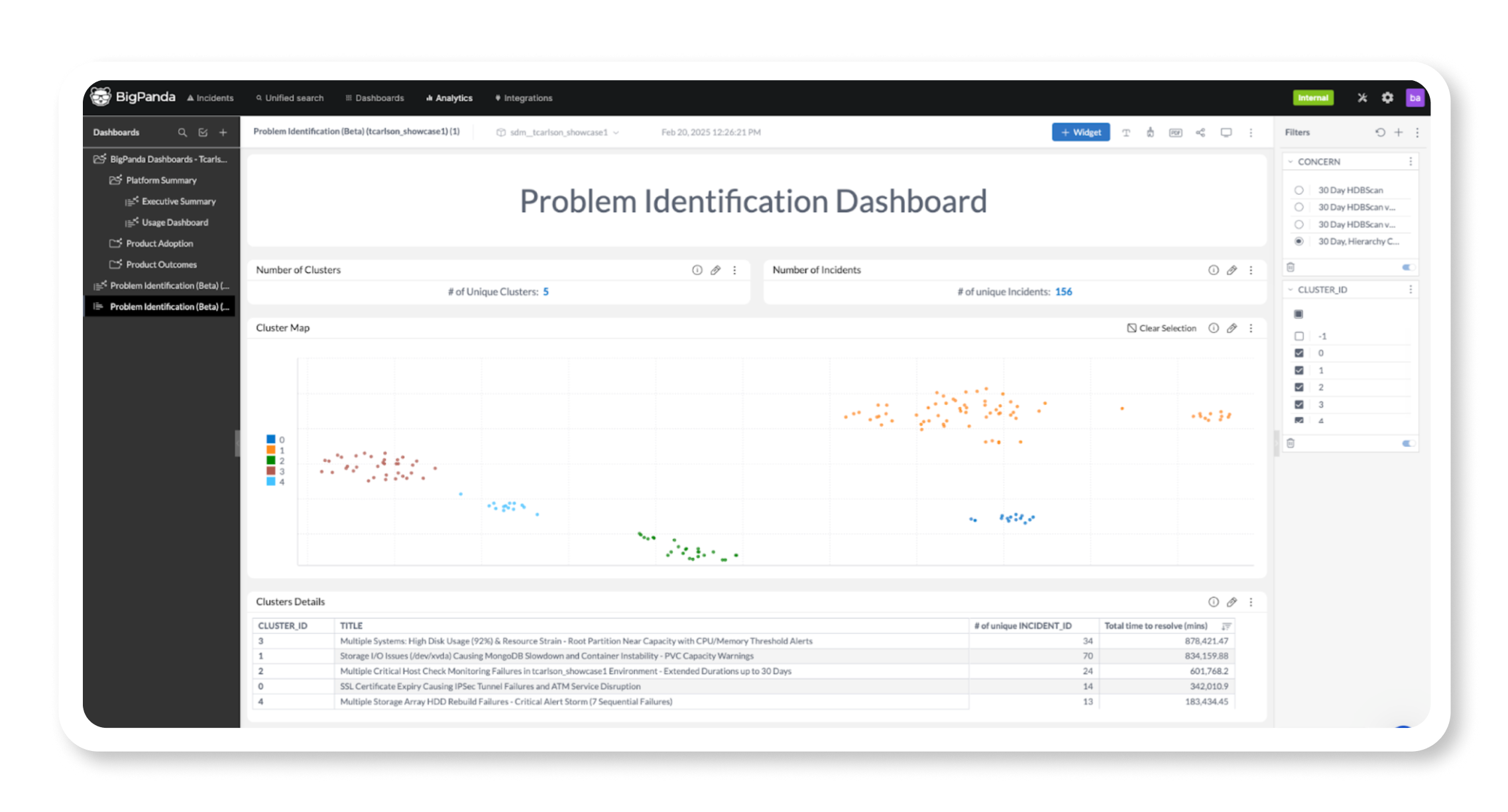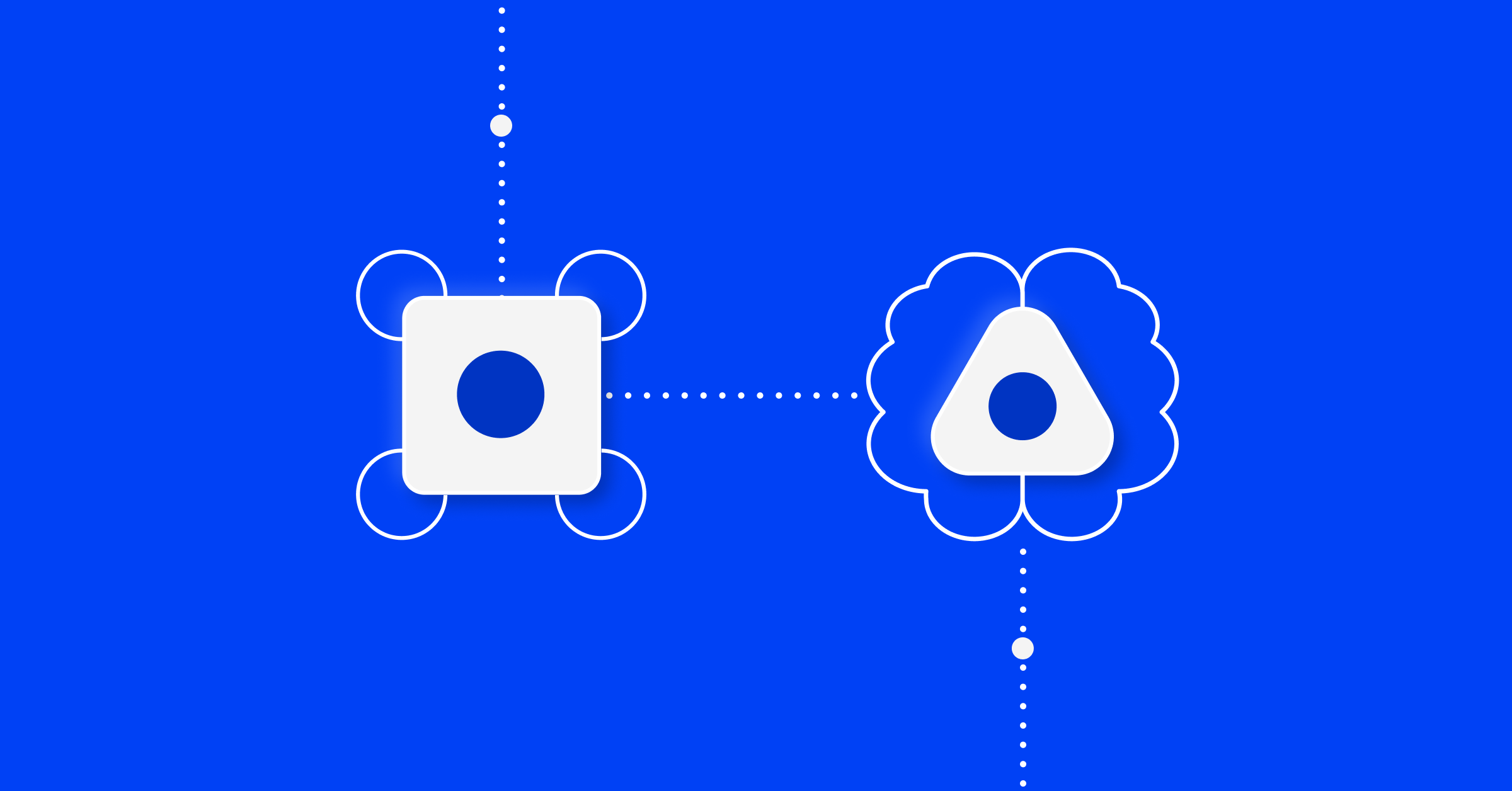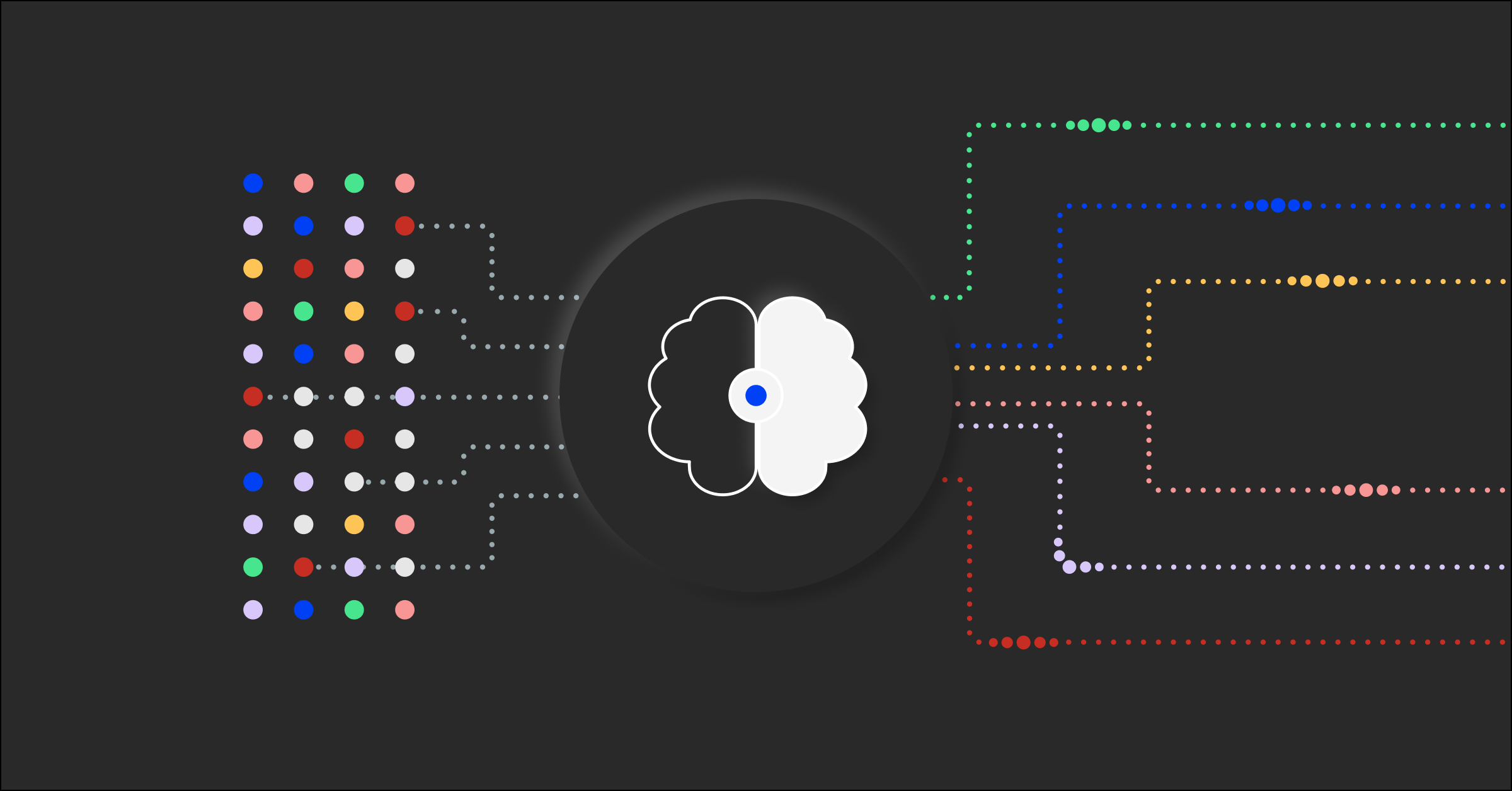Gartner® recently released their 2025 Market Guide for Event Intelligence Solutions. Gartner states, “Event intelligence solutions (EISs) apply AI to augment, accelerate, and automate responses to signals or events detected from digital services. These solutions are designed to process event streams into actionable insights and enable proactive responses that reduce toil and improve performance and availability.”
According to Gartner, the key characteristics of EISs include cross-domain event ingestion, topology assembly, event correlation and enrichment, pattern recognition, and accelerated remediation.
At BigPanda, we believe our platform aligns closely with this definition, offering multiple features that deliver the key capabilities of an EIS and maximize its value and impact.
What are event intelligence solutions, and how BigPanda delivers the capabilities of an EIS
“The renaming of this market from AIOps platforms to EIS serves to direct focus to the intended domain and set of use cases,” according to Gartner. “Namely, the application of AI, ML, and advanced analytics to cross-domain events from monitoring and observability tools to augment, accelerate, and ultimately automate response.”
Whether you call it AIOps or event-intelligence solutions, it’s critical to focus on the value and capabilities these solutions deliver. BigPanda offers a complete EIS that combines cross-domain event ingestion, advanced analytics, event correlation and enrichment, workflow automation, and GenAI capabilities to accelerate IT event management into a unified platform.
Capability: Cross-domain event ingestion, correlation, and enrichment
The modern IT stack creates overwhelming volumes of alert noise, with the average enterprise using more than 20 observability and monitoring data sources. When an incident occurs, ITOps teams must manually comb through massive amounts of alerts. And it’s not just the volume that’s an issue—these alerts are frequently low-quality and unactionable. They lack the necessary context for operators to know what’s happening, why, and what to do about it.
EISs should be able to ingest alerts and events from multiple monitoring tools or sources, including infrastructure, network, application, and cloud-native monitoring and observability tools for cross-domain analysis. These platforms must also be able to correlate, group, and reduce duplicate alerts from monitoring tools, reducing time-consuming and unnecessary manual work.
Alert correlation is key to reducing the overwhelming number of alerts that modern enterprise applications and infrastructure create so that operators can focus on what matters the most. The BigPanda Event Enrichment Engine ingests alerts from multiple data sources, consolidating siloed observability, change, and topology data into a unified view. AI-powered Event Correlation deduplicates, filters, normalizes, and processes these alerts to eliminate unnecessary noise and provide IT operations teams with a complete picture of your IT environment.
Reducing alert noise is a critical capability of an EIS and plays a massive role in efficient incident response. BigPanda customers often reduce alert noise by 80% within eight weeks of implementation and frequently exceed 90% or more over time.1 Gamma, a leading European supplier of communication services, Gamma could review only 3% of its alerts, as they relied on inefficient manual identification and correlation processes. By adopting BigPanda, Gamma reduced alert noise by 93%.
“Within two weeks, we had a substantial reduction in alerts — and better alerts. An instant bang for the buck.”
Dan Bartram, Head of Automation and Monitoring, Gamma
Capability: Topology ingestion and assembly
EISs should be capable of ingesting and assembling a unified topology of IT services, including applications, across domains.
According to Gartner, EISs can “compile unified topologies that capture the relationships between IT services, infrastructure, and applications, including both logical and proximity dependencies. This is a critical component of mapping the relationship between, and impact of, events across multiple domains to facilitate a faster triage.”2
BigPanda provides a real-time, always up-to-date topology model of the entire IT stack. The Real-time Topology Mesh combines data from configuration, cloud, virtualization management, service discovery, APM, and CMDB tools into a full-stack, real-time topology model. Your teams gain total visibility into your topology. They can achieve faster, more accurate root cause detection by leveraging contextual and change data to reveal potential incident causes upstream or downstream.
Capability: Pattern recognition and clustering
EISs use AI/ML to detect or predict critical events or incidents. The Problem Identification Dashboard from BigPanda equips problem managers, observability owners, and application or tool owners with a data-driven approach to analyzing incident patterns.
“BigPanda uses AI to identify parallel alerts automatically and provides context on why they are a trustworthy match for correlation, allowing us to bring those disparate events together and telling us the larger story,” said Tony Penticoff, lead DevOps engineer at Aegon. “Without those insights, we would be blind to the relationships between alerts from multiple sources within our IT environment, but with BigPanda, we can understand the root cause in moments instead of hours.”
The Problem Identification Dashboard provides clear insights into incident trends and patterns, enabling responders to shift from reactive management to proactive prevention and improving service reliability and performance.

Capability: Remediation and automation
EISs continuously learn and improve associations between an event or a pattern of events and the appropriate response either by explicit operator action or observation. BigPanda goes beyond identifying recurring issues—it empowers responders to take faster, better-informed actions.
Advanced Insight gives your L1 and L2 teams access to AI-powered assistance to predict potential issues and automate incident response actions. These teams can understand what’s happening and why and triage faster without frequent, disruptive escalations. With Advanced Insight, your teams gain access to instant, AI-powered suggested actions for triage and remediation that leverage historical incident patterns to confirm priority, impact, and assignment. Your teams can apply step-by-step resolution guidance or suppression actions, eliminating guesswork and ensuring fast, consistent decision-making.
Automating these processes translates into significant real-world business outcomes. Autodesk leveraged the BigPanda platform to establish Smart Ticketing, which automatically notifies key team members and provides tickets that include critical incident information and real-time updates. This feature helped Autodesk streamline its workflow across the incident lifecycle, from detection to investigation to remediation. As a result, Autodesk reduced incidents by 69% and improved MTTR by 85%.
Learn more about event intelligence solutions
EISs can significantly enhance, optimize, accelerate, and automate IT operations (ITOps) and event management processes. Get your copy of the Gartner 2025 Market Guide for Event Intelligence Solutions to learn more about how EISs can help enterprises optimize operations, reduce toil, and improve the availability of their services.
1These statistics are aggregated from BigPanda customer data and reflect average results. Since each organization is unique, individual results may vary based on specific use cases and configurations. Contact us to learn more.
2Gartner, Market Guide for Event Intelligence Solutions, Matt Crossley, Gregg Siegfried, 10 March 2025
GARTNER is a registered trademark and service mark of Gartner, Inc. and/or its affiliates in the U.S. and internationally and is used herein with permission. All rights reserved.
Gartner does not endorse any vendor, product or service depicted in its research publications and does not advise technology users to select only those vendors with the highest ratings or other designation. Gartner research publications consist of the opinions of Gartner’s Research & Advisory organization and should not be construed as statements of fact. Gartner disclaims all warranties, expressed or implied, with respect to this research, including any warranties of merchantability or fitness for a particular purpose.





